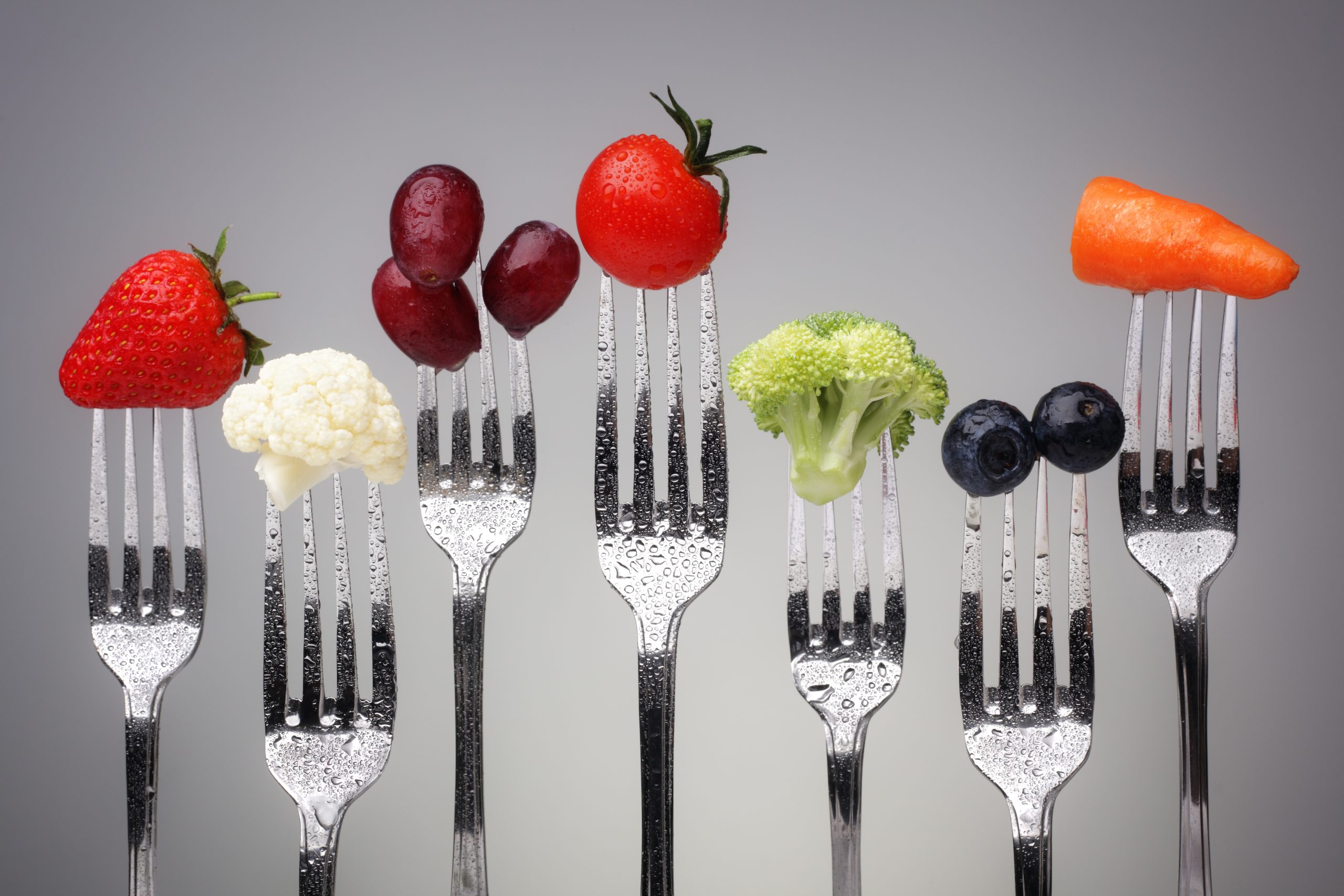Reducing toxin exposure is key to a healthy and happy life. We cannot underestimate the power of a clean environment. The little things we do every day make a big difference throughout our life in terms of our health. So, we start with the basics – air, food, and water.
In this article we will focus on detoxification specifically as it relates to the liver, and actions you can take to support lowering your toxic load.
Toxin Exposure
Regarding the toxic load the body carries, think of your body as a bucket. We are all born with a certain size of bucket (primarily determined by genetics). For example, some of us may have genetic deficiencies in detoxification pathways that speed up the filling of one’s bucket. Our bodies tirelessly detoxify (empty) the bucket through daily cellular processes, with the skin, liver and digestive tract, lungs, and lymphatics doing the heavy lifting.
Everyone has been exposed to toxins; it is inevitable in the world we live in. In fact, from conception and living in utero, we’ve been exposed to toxins. Certain toxins and chemicals pass through cord blood from the mother to the developing fetus. The placenta does act as a selective barrier to prevent many toxic substances from crossing over to the fetus; however, there are some environmental toxins known to cross the placental barrier. Arsenic, cadmium, lead, and mercury are heavy metals that do get across the placenta. Even in small amounts, these toxicants can accumulate in fetal tissues and pose a risk to intrauterine growth and the developing brain.
Then when we’re born, we are exposed to even more toxins – if we’re breathing and living, we’re exposed. The abundance of chemicals, pesticides, air pollution, water contamination, heavy metals, biotoxins, stress, and trauma (and the list could continue…) collectively contribute to the bucket filling up. The bucket can only fill so full before it overflows, creating an inflammatory cascade, symptoms, and illness. When recovering from illness, many factors play a role in the speed at which it occurs – the body’s toxic load is a big one.
One of the main principles of Naturopathic Medicine is to strengthen the system’s terrain by removing obstacles that are preventing healing. This includes strengthening inborn factors, removing disturbing factors, and establishing health-promoting factors. If we think of health as the natural state of being and a “disturbance” as the trigger or the original problem, then identifying and reducing disturbances at the root is paramount to healing.
Toxins can be an obstacle to cure and can affect cellular membrane function, the cell’s ability to create energy, and the ability to detoxify and remove waste. Decreasing total body load, supporting detoxification, and implementing good nutrition will help the body recover rapidly from illness.
Reducing Toxin Exposure
One of the biggest things we can do to support detoxification is to reduce our toxic exposure in the first place.
Air
We understand now better than ever how air pollutants damage our health and the environment. It is known that many environmental toxicants are emitted through human activities and account for approximately 80% of today’s air pollution. Major sources are power stations, refineries, petrochemicals, fertilizer industries, industrial plants, municipal incineration, and automobile combustion from cars, planes, and trains. Additionally, cleaning chemicals, dry cleaning, building materials, VOCs (volatile organic compounds), radon, mold, and bacteria contribute to indoor toxicants. Natural sources include forest fires, dust storms, and burning for agriculture purposes.
A 2021 World Air Quality report found that only three percent of cities and no single country met the latest World Health Organization PM2.5 annual air quality guidelines. Indoor air pollutants are often 2-5 times higher than outdoor levels. Indoor air quality can be more dangerous because we spend 80% of our day inside. Unsurprisingly, having a good quality air filter in your home and office space would be highly beneficial to creating clean indoor air.
Some air purification devices our doctors use in their homes and office:
- IQ Air – Hepa Health Pro Plus – IQ air also created an App-IQ Air Visual | Air Quality to track air quality information to help you lower your exposure to air pollutants.
- Air Oasis – iAdaptAir UV Hepa
Food
Choose organic whenever possible. Eating certified organic will decrease the number of toxins coming into the body through pesticides and herbicides, as organic standards do not allow for the use of synthetic pesticides. Organic companies also do not allow for genetic modification (GMO) of food crops. GMOs are primarily found in processed foods, such as corn derivatives like corn syrup and corn oil, and less in fresh produce. However, a large majority of soybeans and soy-derived ingredients are genetically modified. Other produce to put on your watch list that may be genetically modified are zucchini, yellow squash, corn, papaya, apples, and potatoes. Processed foods with “certified organic” or “Non-GMO Project Verified” labels can be trusted to be GMO-free.
You can find a list of the top 12 dirtiest foods and 15 cleanest foods from the Environmental Working Group here. These lists highlight the most and least contaminated produce. These food lists change yearly based on the most heavily sprayed crops. Recent research from Harvard University shows that eating fruits and vegetables with high levels of pesticides decreases the overall beneficial effect of consumption. Harvard research has also shown that people who consume higher pesticide crops have lower fertility rates.
Water
Regardless of where you live, drinking water straight out of the tap may expose you to toxins that threaten your health. Commonly, toxins come into the water source through things like leaching off pipes (quality of pipes is a factor here), runoff from agriculture practices, improper disposal of pollutants, water treatment with chemicals and disinfectants, and environmental toxins, to name a few.
Water Contaminants:
- Heavy metals and metalloids such as aluminum, arsenic, cadmium, lead, and mercury can severely impact health – increasing cancer and dementia risk, liver and kidney damage, birth defects, sleep, hormonal, and mood disturbances.
- Pesticides, herbicides, and fertilizers have increased with the industrialization of agricultural practices. Chemicals inevitably make their way into water and soil. Notably, glyphosate is a herbicide known to disrupt the body’s endocrine system.
- Other chemicals of note: Benzene, BPA’s, microplastics, and phthalates.
- Pharmaceutics make their way into the water when excreted by humans and animals or are flushed down the toilet.
Since we drink water all day, every day, contaminated water can significantly contribute to filling up our buckets and increasing the overall toxic load that the liver must deal with. It is essential to drink the cleanest, purest water. Water filtration systems can support removing harmful toxins from your water source.
A water filter we love:
Kinetico Reverse Osmosis System (ROS) with Remineralization cartridge and Dechlorinator cartridge is our preferred choice for Canadians. Trail Appliances retails this system in Calgary.
Personal & Household Products
Personal care and many household products are made with numerous chemical ingredients, some toxic, carcinogenic, and even endocrine-disrupting. The average person applies up to 168 chemicals to the skin daily from personal care products and cosmetics. Luckily, resources are available to help you navigate clean and dirty products.
In 2004, the Environmental Working Group (EWG) launched the Skin Deep database to educate the public about personal care products and cosmetics ingredients. This is intended to help consumers understand the health concerns and risks related to certain ingredients.
In 2012, Think Dirty was launched as another resource for consumers to turn to and make shopping for clean products easy. The app allows you to compare products as you shop by scanning the bar code or searching the product on the app search bar. Think Dirty is the Rotten Tomatoes of all skincare and personal products and a trusted go-to source for toxin-free products.
Apps:
- EWG’s Healthy Living
- Think Dirty
Plastics
Researchers worry about the health effects of using plastics every day, especially to heat and store food. When plastics are heated or exposed to UV light, chemicals leech out from the plastic. Some of the chemicals found in plastics can also mimic estrogen. Of concern is BPA, which was once common in plastic water bottles but is still used to line most metal food cans. Other plastic sources include food packaging, children’s toys, detergents, and fabrics.
The solution is to use less plastic in your daily life. Slowly replace your plastic food containers, water bottles, etc., with glass.
Additional lifestyle factors
Quit smoking and reduce alcohol consumption.
Detoxification Pathways
There are two detoxification pathways in the liver. Each pathway requires certain nutrients to function correctly and remove toxins from the body. Nutrients such as amino acids, glutathione, trace minerals, vitamin C, and B vitamins are essential for the liver. Nutritional deficiencies and poor diets can lead to a build-up of toxins which can overwhelm the pathways, deplete antioxidants that protect the liver, and eventually damage liver cells.
Phase One: Enzymes and Key Nutrients
Phase one of the liver detoxification uses enzymes and key nutrients to break toxins down into smaller units. The enzymes used are the cytochrome p450 enzymes. The speed at which these enzymes function is also determined by genetics and is influenced by exercise, heavy metals, and the availability of certain nutrients, either speeding up or inhibiting the enzymes’ function. This phase of liver detoxification produces even more toxic end-product metabolites that need to be removed quickly through phase two. This is why if phase one works correctly, but phase two is a little sluggish (or missing key nutrients), our bodies can run into problems, with toxins building up and creating inflammation and cellular damage.
Phase Two: Detoxification
Phase two is the conjugation (addition) phase of liver detoxification. This addition takes the toxic metabolites created in phase one and renders them less harmful to the body. This makes them easier to transport out for elimination through the stool and kidneys. There are many vital processes by which phase two does its magic. Depending on the type of toxin, the phase one liver pathway will push its bi-products down a specific pathway, where specialized enzymes work to add a specific substance to the phase one end-product metabolites. These particular substances must come from the diet, or the pathways will slow down.
Pathways of Phase Two Detoxification:
- The Glutathione pathway (Glutathione Conjugation) – uses glutathione and the enzyme glutathione-s-transferase.
- The Sulfation pathway– uses sulfate.
- The Methylation pathway– uses methyl groups (from SAM – made from methionine, choline, B12, and folate (B9)) and methyl transferase enzymes. (Example: Catechol-O-methyl-transferase COMT)).
- The Glucuronidation pathway– uses glucuronic acids and the enzyme UDP-glucuronyltransferase.
- The Acetylation pathway– attaches an acetyl co-A through the enzyme N-alpha-acetyltransferase (NAT).
- The Amino Acid Conjugation Pathway– uses amino acids such as glycine, taurine, glutamine, arginine, and ornithine and amino acid transferase enzymes. Glycine conjugation is the most common.
Ways to Support Glutathione Conjugation
Supplements:
- Glutathione or glutathione precursors such as NAC (N-acetylcysteine)
- Vitamins that recycle glutathione – Vitamin C and Vitamin E
- Supporting other antioxidants to prevent glutathione depletion – alpha-lipoic acid, and omega three fatty acids
- B-vitamins – play a role in proper enzyme function in glutathione synthesis
- Selenium is a cofactor of glutathione peroxidase and increases the expression and activity of certain glutathione-related enzymes. It is also an antioxidant.
Nutrition:
- Consume the colours of the rainbow. Various fruits and vegetables provide a phytonutrient diverse diet to strengthen the body’s defence against oxidative stress.
- Cruciferous vegetables rich in sulphur (broccoli, broccoli sprouts, cauliflower, brussels sprouts, cabbages, and kale)
- Citrus fruits (rich in limonoids and flavonoids) upregulate enzyme activity in glutathione production
- Adequate protein diets to get enough cysteine, glycine, and glutamine – the amino acids that form glutathione
- Sometimes, impaired protein digestion from reduced mucosal hydrochloric acid production or pancreatic enzyme function is a limiting factor to sufficient glutathione levels
- Green tea – increases antioxidant protection and glutathione availability
- Herbs: gingko, curcumin, rosemary, and milk thistle
How to Support Sulfation
Supplements:
- N-acetyl cysteine (NAC)
- Glutathione
Nutrition:
- Consuming sulfur containing amino acids (cysteine, methionine, taurine) through dietary protein
- Sulfur rich foods – cruciferous vegetables
- Consuming more allium rich vegetables (garlic, onions: chives, leeks, shallots, etc.), and eggs
Supporting Methylation
Supplements:
- Supplements that either donate methyl groups or support the formation of methyl groups: SAMe, methionine, methyl-B12, active folate (5-MTHF), B6, B2, magnesium, zinc and choline.
Ways to Support Glucuronidation
Supplements:
- That induce UGT enzyme activity: curcumin, resveratrol, and quercetin.
- That inhibit beta-glucuronidase activity: calcium-d-glucurate, and probiotics.
How to Support Acetylation
Vitamin C:
- Nutrition: rose hips, cherries, plums, kiwi, guava, sweet bell peppers, strawberries, cantaloupe, kale, brussels sprouts, broccoli, and citrus fruits like oranges
B Vitamins:
- Dark leafy greens, fish, meats, whole grains, nuts, and seeds
Supporting Amino Acid Conjugation
Nutrition:
- Amino acids are the building blocks of protein and require a protein rich diet from various protein sources.
Contact Linden & Arc Vitality Institute
At Linden & Arc Vitality Institute, our Functional Medicine practice seeks to uncover and treat the root cause of your illness, healing you as a complete being, not just a collection of symptoms. Our Functional Medicine clinic provides highly personalized, integrated care based on assessments of your body’s key biological functions and how you live your life using evidence-based treatments.
To learn more about reducing toxins and getting back to feeling your best, contact Linden & Arc Vitality Institute HERE to get started on your naturopathic health journey.
Author
Dr. Ayla Lester, ND
References:
Vahter, M. (2009, August 28). Effects of arsenic on maternal and fetal health – annual reviews. Annual reviews. Retrieved June 27, 2022, from https://www.annualreviews.org/doi/10.1146/annurev-nutr-080508-141102
Chiu, Y.H., Williams, P. L., Mínguez-Alarcón, L., Gillman, M., Sun, Q., Ospina, M., Calafat, A. M., Hauser, R., & Chavarro, J. E. (2017, September 20). Comparison of questionnaire-based estimation of pesticide residue intake from fruits and vegetables with urinary concentrations of pesticide biomarkers. Nature News. Retrieved June 27, 2022, from https://www.nature.com/articles/jes201722
The detoxification system part III: Sulfoxidation and sulfation. (n.d.). Retrieved June 27, 2022, from https://www.talkingaboutthescience.com/studies/Donohue-Sulfoxidation.pdf
Group, E. W. (n.d.). EWG’s 2022 Shopper’s Guide to Pesticides in Produce™. EWG’s 2022 Shopper’s Guide to Pesticides in Produce | Summary. Retrieved June 27, 2022, from https://www.ewg.org/foodnews/summary.php
Gundacker, C., & Hengstschläger, M. (2012, May). The role of the placenta in fetal exposure to heavy metals – Wiener Medizinische Wochenschrift. SpringerLink. Retrieved June 27, 2022, from https://link.springer.com/article/10.1007/s10354-012-0074-3
Hodges, R. E., & Minich, D. M. (2015). Modulation of metabolic detoxification pathways using foods and food-derived components: A scientific review with clinical application. Journal of Nutrition and Metabolism. Retrieved June 27, 2022, from https://www.ncbi.nlm.nih.gov/pmc/articles/PMC4488002/
Kesse-Guyot, E., Lairon, D., Allès, B., Seconda, L., Rebouillat, P., Brunin J., Vidal, R., Taupier-Letage, B., Galan, P., Amiot, M.J., Péneau, S., Touvier, M., Boizot-Santai, C., Ducros, V., Soler, L.G., Cravedi, J.P., Debrauwer, L., Hercberg, S., Langevin, B., Pointereau, P., Baudry, J., (n.d.). Key findings of the French bionutrinet project on organic food-based diets: Description, determinants, and relationships to health and the environment. Advances in Nutrition (Bethesda, Md.). Retrieved June 27, 2022, from https://pubmed.ncbi.nlm.nih.gov/34661620/
Leung, D. Y. C. (1AD, January 1). Outdoor-indoor air pollution in urban environment: Challenges and opportunity. Frontiers. Retrieved June 27, 2022, from https://www.frontiersin.org/articles/10.3389/fenvs.2014.00069/full
Liver phases 1 and 2 detoxification pathways – balanced concepts. (n.d.). Retrieved June 27, 2022, from http://www.balancedconcepts.net/liver_phases_detox_paths.pdf
Lykkesfeldt, J., Michels, A. J., & Frei, B. (2014, January 1). Vitamin C. Advances in nutrition (Bethesda, Md.). Retrieved June 27, 2022, from https://www.ncbi.nlm.nih.gov/pmc/articles/PMC3884093/
Manisalidis, I., Stavropoulou, E., Stavropoulos, A., & Bezirtzoglou, E. (1AD, January 1). Environmental and health impacts of air pollution: A review. Frontiers. Retrieved June 27, 2022, from https://www.frontiersin.org/articles/10.3389/fpubh.2020.00014/full
Minich, D. M. (2019, July 8). A review of dietary (phyto)nutrients for glutathione support. Nutrients. Retrieved June 27, 2022, from https://pubmed.ncbi.nlm.nih.gov/31484368/
Needham, L. L., Grandjean, P., Heinzow, B., Jørgensen, P. J., Nielsen, F., Patterson, D. G., Sjödin, A., Turner, W. E., & Weihe, P. (2011, February 1). Partition of environmental chemicals between maternal and fetal blood and tissues. Environmental Science & Technology. Retrieved June 27, 2022, from https://www.ncbi.nlm.nih.gov/pmc/articles/PMC3031182/
Residential & Commercial Air Purifiers: Air Oasis®. Air Oasis. (2022, June 27). Retrieved June 27, 2022, from https://www.airoasis.com/
Vigar, V., Myers, S., Oliver, C., Arellano, J., Robinson, S., & Leifert, C. (2019, December 18). A systematic review of organic versus conventional food consumption: Is there a measurable benefit on human health? MDPI. Retrieved June 27, 2022, from https://doi.org/10.3390/nu12010007
Wellington, K., & Jarvis, B. (2012, August 15). Silymarin: A review of its clinical properties in the management of Hepatic Disorders – BioDrugs. SpringerLink. Retrieved June 27, 2022, from https://link.springer.com/article/10.2165/00063030-200115070-00005
Yu-Han Chiu, M. D. (2018, January 1). Association between pesticide residue intake from consumption of fruits and vegetables and pregnancy outcomes among woment undergoing infertility treatment with assisted reproductive technology. JAMA Internal Medicine. Retrieved June 27, 2022, from http://jamanetwork.com/journals/jamainternalmedicine/article-abstract/2659557
Zheng, G., Zhong, H., Guo, Z., Wu, Z., Zhang, H., Wang, C., Zhou, Y., & Zuo, Z. (2014, July 11). Levels of heavy metals and trace elements in umbilical cord blood and the risk of adverse pregnancy outcomes: A population-based study. SpringerLink. Retrieved June 27, 2022, from https://link.springer.com/article/10.1007/s12011-014-0057-x










